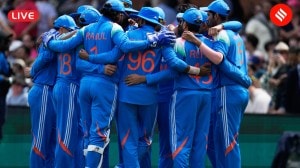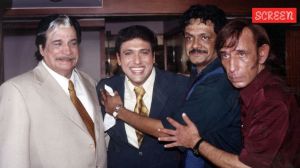Close battle between hosts and India
COLOMBO, June 18: At the start of each one-day tournament nowadays you hear how at least one team is "fine-tuning" for the 1999 Wo...

COLOMBO, June 18: At the start of each one-day tournament nowadays you hear how at least one team is "fine-tuning" for the 1999 World Cup. Rest assured, the smart players allot only enough time to give a passing thought to that far off event before the bulk of their concentration is focused on the trophy within reach.
Let’s see how the three teams competing in the Singer Nidhas Trophy are placed to reach the final of the main event, to be played in UK in twelve months time. You can discount New Zealand on the basis of not enough class in batting.
English conditions will suit the Kiwi’s predominantly medium-pace seam attack and they’ll field like greedy bookmakers, but in the end the batting won’t provide sufficient runs.
Sri Lanka are in a transition stage, following the realisation that some of their aging players can’t hold form long enough to defend the crown they so comprehensively won in Lahore. Still, the Lions of Lanka have the nucleus of their champion team intact.
However, Ranatunga won’t beable to rely so heavily on the spinners as he did in winning on the sub-continent and Sri Lanka haven’t been able to unearth enough class seam support for the hard working Chaminda Vaas.
India, on the other hand, have built up a good stock of medium-fast seam bowlers who should perform well in England, especially if the current damp conditions are repeated in the early summer of 1999. A pace attack of Javagal Srinath, Venkatesh Prasad and the promising Ajit Agarkar is ideal; at least the equal of India’s fast bowling the last time the Cup was played in the UK.
New Zealand batsmen have long been vulnerable against good spin bowling. Their inability to post scores sufficiently high enough to really press two strong batting sides, will ensure they are the first team to drop out of the race. That leaves the hosts and India in a close battle for the Singer Nidhas Trophy.
Despite some of the gloss wearing off the Sri Lankan magic of 1996, they do play well at home and a return to form by de Silva wouldgreatly boost their chances. The Sri Lankan left-handers have also held sway recently against the leg-spin of Anil Kumble. And if Jayasuriya and Ranatunga continue to dominate, it will severely weaken the Indian bowling thrust in these parts.
Then there is theory of India’s diminished returns away from home. The great victory over Australia in the Sharjah final will have done much to help convince the players that they have a well-balanced side, capable of winning under most conditions. On the other hand, the Australians will probably swear this was a simple case of being beaten by a one-man batting team. Not a surprising judgement in the light of Sachin Tendulkar’s heroic deeds in Sharjah, but too harsh as India has been gradually gaining depth in this department over the last couple of years.
Saurav Ganguly has developed into a more forceful player in that time, while Mohammed has found a new lease of life since he was restored to the captaincy and Ajay Jadeja is capable of spectacular bursts of form asthe Australians can attest. Add to that all-rounders Robin Singh, Hrishikesh Kanitkar and Nayan Mongia and the line-up possesses depth, while it only lacks one more classy top order player apart from Tendulkar.
As part of India’s build up to the World Cup of 1999 they need to move into winning mode. That makes every One-day tournament important, hence the need to concentrate on the Singer Nidhas Trophy.



- 01
- 02
- 03
- 04
- 05


























